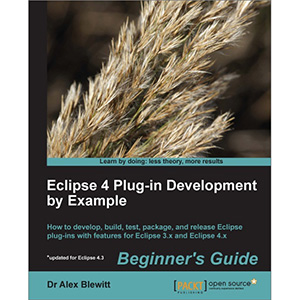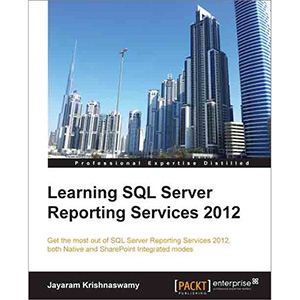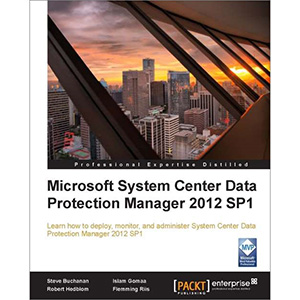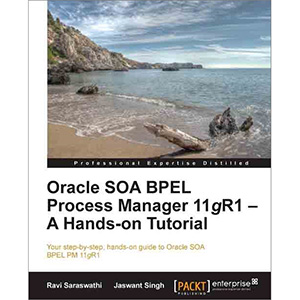Wow! eBook: JBoss AS 7 Development - 5 new eBooks |  |
- JBoss AS 7 Development
- Eclipse 4 Plug-in Development by Example: Beginner’s Guide
- Learning SQL Server Reporting Services 2012
- Microsoft System Center Data Protection Manager 2012 SP1
- Oracle SOA BPEL Process Manager 11gR1 – A Hands-on Tutorial
| Posted: 02 Oct 2013 05:07 AM PDT
Book DescriptionJBoss Application Server meets high standards of reliability, efficiency, and robustness, and is used to build powerful and secure Java EE applications. It supports the most important areas of Java Enterprise programming including EJB 3.1, Contexts and Dependency Injection, JAX-WS and JAX-RS web services, the security framework, and more. Getting started with JBoss application server development can be challenging; however, with the right approach and guidance, you can easily master it and this book promises that. Written in an easy-to-read style, this book will take you from the basics of JBoss AS—such as installing core components and plugins—to the skills that will make you a JBoss developer to be reckoned with, covering advanced topics such as developing applications with the JBoss messaging service, JBoss web services, clustered applications, and more. You will learn the necessary steps to install a suitable environment for developing enterprise applications on JBoss AS. You will also learn how to design Enterprise applications using Eclipse, JBoss plugins, and Maven to build and deploy your applications. Readers will learn how to enable distributed communication using JMS. Storing and retrieving objects will be made easier using the Java Persistence API. The core section of the book will take you into the programming arena with tested, real-world examples. The example programs have been carefully crafted to be easy to understand and useful as starting points for your applications. This practical guide will show you how to gain hands-on experience rapidly on Java EE development using JBoss AS with easy-to-understand and practical programming examples. What you will learn from this book
Approach Who this book is for Book Details
Related Books
The post JBoss AS 7 Development appeared first on Wow! eBook. |
| Eclipse 4 Plug-in Development by Example: Beginner’s Guide Posted: 02 Oct 2013 05:04 AM PDT
Book DescriptionAs a highly extensible platform, Eclipse is used by everyone from independent software developers to NASA. Key to this is Eclipse's plug-in ecosystem, which allows applications to be developed in a modular architecture and extended through its use of plug-ins and features. “Eclipse 4 Plug-in Development by Example Beginner’s Guide” takes the reader through the full journey of plug-in development, starting with an introduction to Eclipse plug-ins, continued through packaging and culminating in automated testing and deployment. The example code provides simple snippets which can be developed and extended to get you going quickly. This book covers basics of plug-in development, creating user interfaces with both SWT and JFace, and interacting with the user and execution of long-running tasks in the background. Example-based tasks such as creating and working with preferences and advanced tasks such as well as working with Eclipse's files and resources. A specific chapter on the differences between Eclipse 3.x and Eclipse 4.x presents a detailed view of the changes needed by applications and plug-ins upgrading to the new model. Finally, the book concludes on how to package plug-ins into update sites, and build and test them automatically. What you will learn from this book
Approach Who this book is for Book Details
Related Books
The post Eclipse 4 Plug-in Development by Example: Beginner’s Guide appeared first on Wow! eBook. |
| Learning SQL Server Reporting Services 2012 Posted: 02 Oct 2013 05:01 AM PDT
Book DescriptionIn the present day information-centric world we live in, the success of an enterprise depends enormously on how its information is generated, handled, and disseminated. With ample screenshots and over 65 hands-on exercises, this book will guide you effortlessly through creating cutting edge reports using SQL Server Reporting Services 2012, native and fully integrated with SharePoint Server 2010 including new features like Power View and Data Alerts. “Learning SQL Server Reporting Services 2012″ will get you started right from installation and then move on to configuration of SQL Server Reporting Services 2012. Start learning right from Chapter 1 and build your skill to create reports using the latest tools and deploy them to the latest servers, both Native and SharePoint. No guessing; you will learn all—Power View, Data Alerts, SQL Azure Reporting,the latest Reporting Services Gadgets, and more. “Learning SQL Server Reporting Services 2012″ is a definitive guide to a step-by-step, metered approach to get a jump start on the latest features in SQL Server Reporting Services.Reporting Services in Microsoft SQL Server 2012 is more tightly integrated not only with the Microsoft Business Stack but also with SharePoint, Windows Azure, and the Visual Studio suite of products, with many new features. You will install and configure the toolset to work with SSRS 2012 integrated with SharePoint 2010. Using SQL Server Data Tools, you will author reports and deploy. You will learn about security to work with Report Manager and Central Administration in SharePoint. Using Report Builder, you will learn about authoring cutting edge reports. You will create Tabular Models and begin experiencing the thrill of creating Power View Reports. What you will learn from this book
Approach Who this book is for Book Details
Related Books
The post Learning SQL Server Reporting Services 2012 appeared first on Wow! eBook. |
| Microsoft System Center Data Protection Manager 2012 SP1 Posted: 02 Oct 2013 04:59 AM PDT
Book DescriptionMicrosoft System Center Data Protection Manager is a centralized data protection solution. DPM is used for data protection and recovery for Microsoft workloads. Data Protection Manager allows backup and recovery of Microsoft Workloads, including SQL Server, Exchange, Sharepoint, Client Computers, and Hyper-V. Enabling disk and tape-based backup methods, DPM also allows central management of the system state and "Bare-Metal Recovery". Microsoft System Center Data Protection Manager 2012 SP1 is a guide for administrators of System Center Data Protection Manager. By the end of this book, users will be able to carry out automated installs, migrate DPM to new hardware, set up custom reporting, use the DPM central console, and implement offsite DPM strategies such as chaining, monitoring, and cyclic protection. In this book you will gain insight from Microsoft Most Valued Professionals into the new features in DPM 2012 along with an understanding of the core tasks that administrators will face, including installing and configuring DPM 2012, workload protection, and managing the system. It will also show administrators how to effectively create backups of the protected workloads and use these backups to recover from a disaster. It will also contain information on backup networks, client protection, and how to automate tasks in DPM to make your job as an administrator easier. After reading this book you should be confident enough to master protecting your organizations data with Microsoft System Center Data Protection Manager. What you will learn from this book
Approach Who this book is for Book Details
Related Books
The post Microsoft System Center Data Protection Manager 2012 SP1 appeared first on Wow! eBook. |
| Oracle SOA BPEL Process Manager 11gR1 – A Hands-on Tutorial Posted: 02 Oct 2013 04:56 AM PDT
Book DescriptionBPEL, Business Process Execution Language is the definitive standard in writing and defining actions within business processes. Oracle BPEL Process Manager R1 is Oracle's latest offering, providing you with a complete end-to-end platform for the creation, implementation, and management of your BPEL business processes that are so important to your service-oriented architecture. “Oracle SOA BPEL Process Manager 11gR1 – A Hands-on Tutorial” is your guide to BPEL design and development, SOA Suite platform troubleshooting, and engineering in a detailed step-by-step guide working real-world examples and case studies. Using industry-leading practices you will start by creating your first BPEL process and move onto configuring your processes, then invoking, orchestrating, and testing them. You will then learn how to use architect and design services using BPEL, performance tuning, integration, and security, as well as high availability, troubleshooting, and modeling for the future. “Oracle SOA BPEL Process Manager 11gR1 – A Hands-on Tutorial” is your complete hands-on guide to Oracle SOA BPEL Process Manager 11g. What you will learn from this book
Approach Who this book is for Book Details
Related Books
The post Oracle SOA BPEL Process Manager 11gR1 – A Hands-on Tutorial appeared first on Wow! eBook. |
| You are subscribed to email updates from Wow! eBook To stop receiving these emails, you may unsubscribe now. | Email delivery powered by Google |
| Google Inc., 20 West Kinzie, Chicago IL USA 60610 | |





Tidak ada komentar:
Posting Komentar